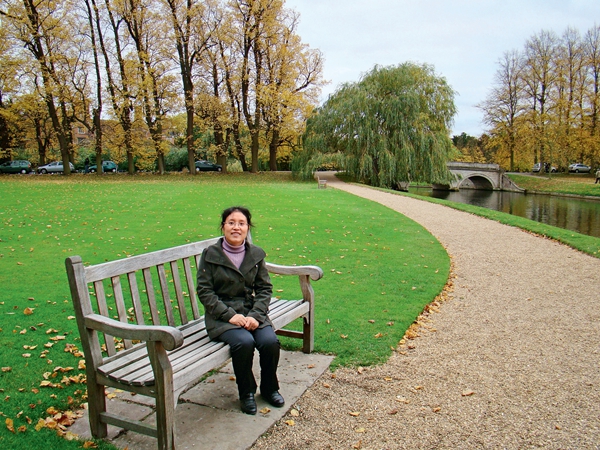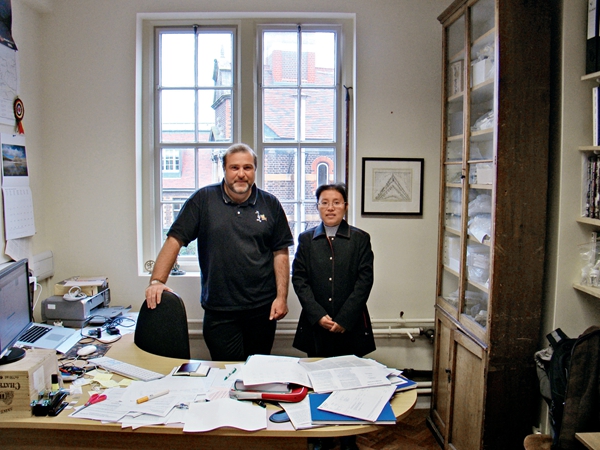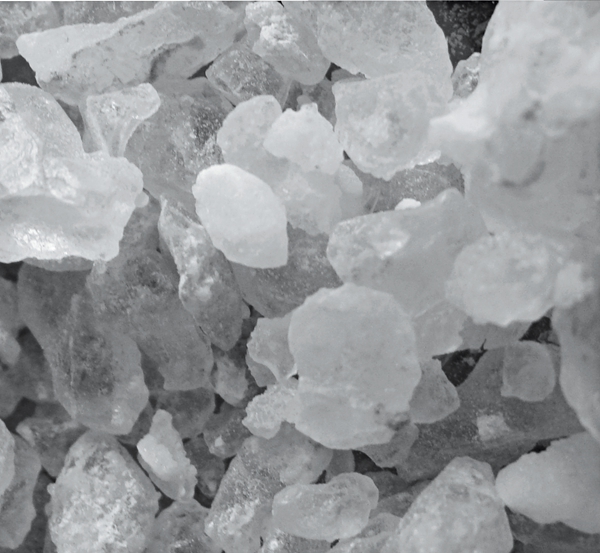By CHEN HEYING
By CHEN HEYING
AS one of major challenges confronting the world, climate change was a selected topic discussed at the 72nd UN General Assembly held from September 19 to 25, 2017. Lately, the globe has been frequently rocked by natural disasters such as typhoons and hurricanes. In the context of global warming, how should we respond to natural disasters and extreme weather?
Examining Lake Sediments
Scientists have long been trying to trace climate change through geological records of deep-sea sediments, polar and alpine ice cores, loess, lakes, stalagmites, corals, etc.

Li Minghui, associate research fellow at the Institute of Tibetan Plateau Research with the Chinese Academy of Sciences, focuses on studying lake sediments and environmental mineralogy. Since the early 1990s, she has traveled to many faraway places such as the Tibetan Plateau and the Qilian Mountains.
According to Li, the research on global climate change is vibrant and at the forefront of natural scientific research. It is also the core topic of global change research. Lake sediment records rich historical climate information in a precise manner. The mineral composition of sediments captures key clues of climate change, constituting a basic indicator in assessing the climate and environment.
With the lake sediment acting as a kind of climate proxy, scientists are able to reconstruct the sequence of environmental changes by measuring the available sediments and extracting climate and environmental information. The research will help us to understand climate change throughout history, and moreover, better predict the changes in the future.
Exploring the Plateau
The Qinghai-Tibet Plateau is home to a large quantity of lakes, whose area accounts for more than 45 percent of China’s total. In addition, the highland lakes are almost free from human activities. Most are inland saline lakes, rich in salt minerals such as halite, borax, and sodium sulfate. These salt minerals record the environmental changes in different areas of the plateau.
Thanks to its unique geographical location, the Tibetan Plateau is sensitive to climate change and thus serves as a good place in this regard. The minerals in plateau lake sediments are extremely useful in research on environment evolution.

Since Li joined the Tibetan Plateau Institute in 2005, her research findings have filled a gap in this field. For instance, she discovered monohydrocalcite (CaCO3·H2O), a mineral, in high-altitude areas, and a sulfate mineral Na4Ca (So4)3·2H2O in China. All these findings provide mineralogical evidence for the lake environment changes, and also enrich the basic data for salt minerals research. Li and her team also revealed that the air temperature in Qaidam Basin became cooler and dryer since the pliocene epoch – an occurrence ascribed to cooled global climate as well as a periodic uplifting of the Qinghai-Tibet Plateau and regional circulation system adjustments.
How did her research reveal climate change in the plateau? Li’s studies focus on salt and clay minerals, especially salt minerals. Salt minerals are usually found in sea facies, limnetic deposits, and salty soil in arid climate zones. With increasing evaporation, for example, calcium carbonate minerals such as calcite and aragonite will be precipitated from the water first, followed by calcium sulfate mineral gypsum and then halite, sodium sulfate, and potassium magnesium salt. “The precipitated minerals indicate the concentration degrees of ancient lakes and drought condition of the environment,” Li said, using Namco Lake in Tibet as an example. About 2,100 years ago, the monohydrocalcite formed due to precipitation from the lake, which increased its salinity.
Devoted Geological Scientist
Geology is a special science that requires arduous mental and manual labor. Geologists are regarded as people who carry field rations when climbing mountains and heavy stones upon their return. Due to the extensive physical effort that geology requires the field used to be dominated by men. However, in today’s changing world, researchers like Li are making clear that geology is a field for women as well as men.

Li Minghui studied at Shandong University of Science and Technology (formerly Shandong College of Mining), Peking University, and Chinese Academy of Geological Sciences. She was a visiting scholar at Cambridge University from 2009 to 2010. Her relatives and friends were proud of her academic success and hoped that she would land a stable and easy job in a big city after graduation. However, Li chose geology and devoted her youth to the development of Chinese geological science.
China is among the countries most affected by climate change. Against the backdrop of global warming, it faces growing threats from high temperatures, floods, and drought. Climate change has posed challenges to China’s economic and social sustainable development as well as national security. China has hence been taking active responsive measures. On September 3, 2016, it officially joined the Paris Climate Change Agreement.
Scientists are also taking actions. The Institute of Tibetan Plateau Research, Chinese Academy of Sciences, kicked off the Second Tibetan Plateau Comprehensive Science Research in Lhasa on August 19, 2017. This marks a milestone in highland scientific research as the first round of its kind was held about half a century ago in the 1970s. The research, estimated to last for 10 years, aims to reveal the mechanism of environmental change and improve ecological security shelter systems.
Li has great expectations for the Second Tibetan Plateau Comprehensive Science Research. She said, “The Qinghai-Tibet Plateau, last pure land of the world, is full of ecological mysteries just waiting to be explored.”
CHEN HEYING is a media contributor.